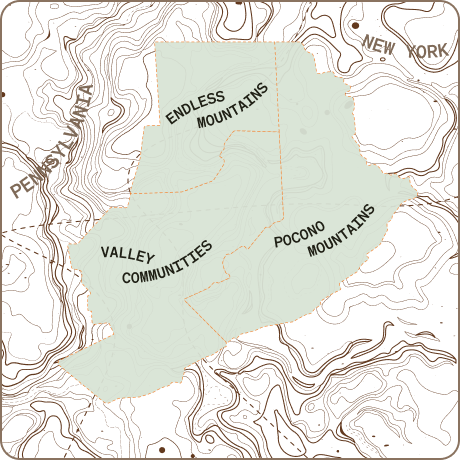Since 1924, the American Heart Association has been fighting heart disease and stroke and helping people to live longer, healthier lives. Our local AHA shares ways that you can stay healthy, get involved and help raise awareness right here in NEPA.
Go from Bystander to Lifesaver
The American Heart Association encourages all Northeast Pennsylvania families to learn CPR this February.
During February – American Heart Month – the American Heart Association, the leading voluntary health organization devoted to a world of longer, healthier lives for all, is urging all families to learn the lifesaving skill of CPR. With more than 350,0000 people experiencing cardiac arrests outside of a hospital, including 23,000 children, CPR is a critical skill that kids as young as 9 years old can learn.
Joining the Nation of Lifesavers, an American Heart Association initiative focused on doubling the survival rate of cardiac arrest by 2030 is easier than ever with many learning options available to families. Families can take an online CPR course, learn and practice Hands-Only CPR with a CPR Anytime® Training Kit, watch a 60-second video to learn Hands-Only CPR, or find a Heartsaver™ certification course near them.
There are three main types of CPR: Traditional, Child and Infant and Hands-Only.
- Traditional CPR is the method that combines chest compressions 2 inches in depth at the rate of 100-120 beats per minute with two breathes.
- Infant and Child CPR is similar to traditional CPR but has some key differences. Child CPR is performed with chest compressions at the depth of two inches with one or two hands, followed by two breaths. Infant CPR is performed with chest compressions at the dept of 1 ½ inches with two fingers, followed by two breaths and repeat.
- Hands-Only CPR is chest compression-only CPR and has been shown to be equally effective as traditional CPR in the first few minutes of emergency response. It involves two simple steps that anyone can learn from a 60-second video available at org/handsonlycpr.
Step 1: Call 911
Step 2: Push hard and fast in the center of the chest
The American Heart Association is committed to turning a nation of bystanders into lifesavers. The multi-year initiative will ensure teens and adults can learn about CPR and AED use, share that knowledge with friends and family and engage employers, policymakers, philanthropists and others to create support for a nation of lifesavers. The long-term goal: to ensure that in the face of a cardiac emergency, everyone, everywhere is prepared and empowered to perform CPR and become a vital link in the chain of survival.
CPR, especially if performed immediately, can double or triple a cardiac arrest victim’s chance of survival – which is key since about 90% of people who suffer out-of-hospital cardiac arrests die. For more information on how to join the Nation of Lifesavers this February, visit heart.org/nation.


















